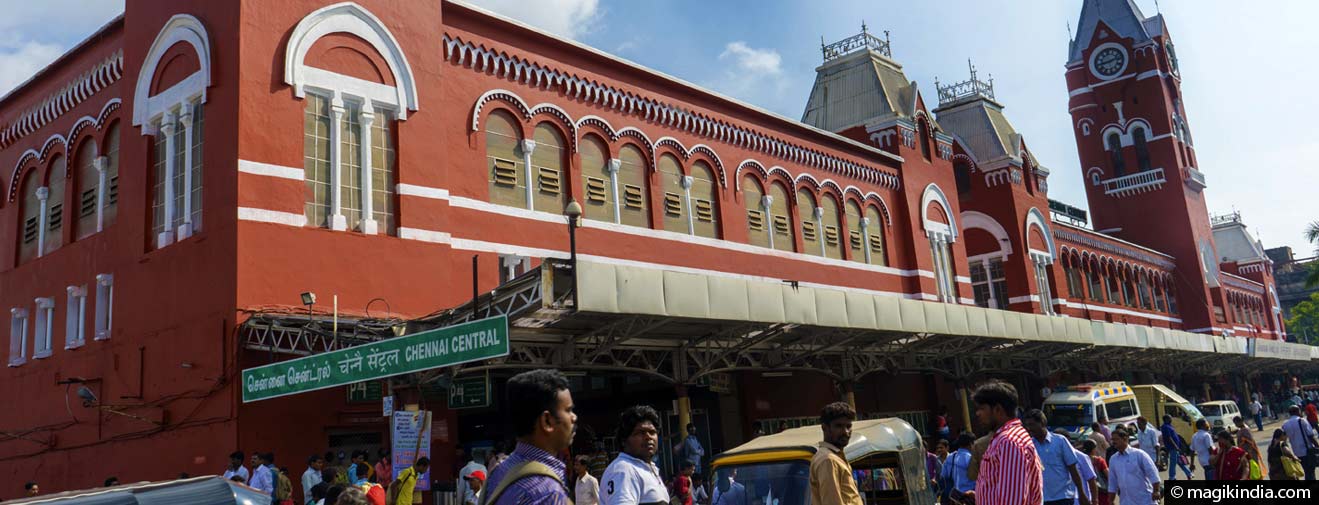
Chennai (Madras), Capital of Tamil Nadu
Chennai (formerly Madras) lies on the Coromandel coast in southwest India. It is the capital of the state of Tamil Nadu and one of India’s major economic centres. Chennai also boasts a considerable cultural and artistic heritage, of which Carnatic classical music and the Bharata Natyam dance are prime examples. Chennai is there to be discovered, like a foretaste of Tamil culture.

Chennai was the capital of a number of kingdoms over the centuries, for example under the Pallava, Chera, Chola and Pandya dynasties.
The town’s documented history begins in 1644 when the British landed there and built Fort St. George. The French laid siege to Madras in 1758-9, but the British retained control.
In the late 18th century the town became a major port and a powerful administrative centre. After independence, Chennai was the obvious choice to be capital of Tamil Nadu.
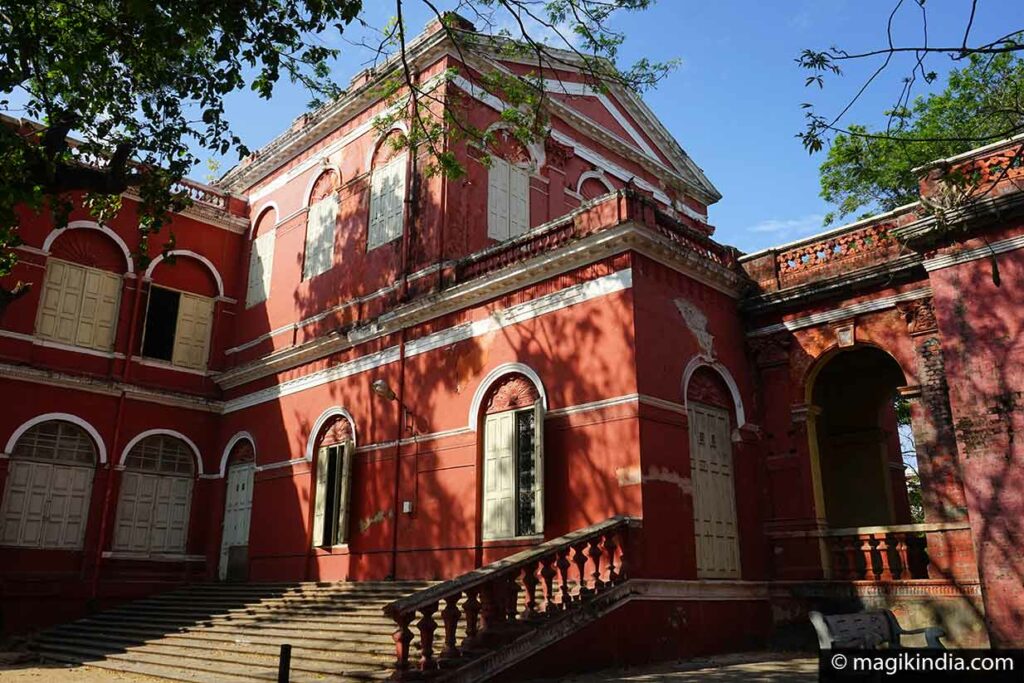
Dance and Carnatic music
The town is one of the main centres for the art of Bharata Natyam, one of the eight forms of Indian classical dance. It is one of the oldest forms of dance in India and originated in Tamil Nadu.
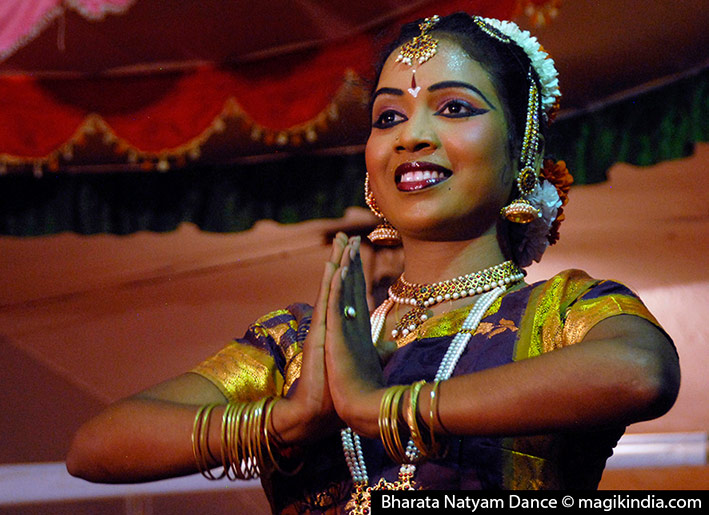
In Chennai, Bharata Natyam is governed by the Kalakshetra Foundation, an academy of arts and culture dedicated to preserving the traditional values of Indian arts and crafts, dance and music particularly. It was founded in 1936 by the celebrated dancer Rukmini Devi Arundale.
Chennai also fulfils a particular function for South Indian classical music, known as Carnatic music. In 1927 the Madras Music Academy opened what was to become the world’s largest Carnatic music festival, the Chennai December Season.
In 1930 the University of Madras became the first Indian university to run a musicology course.
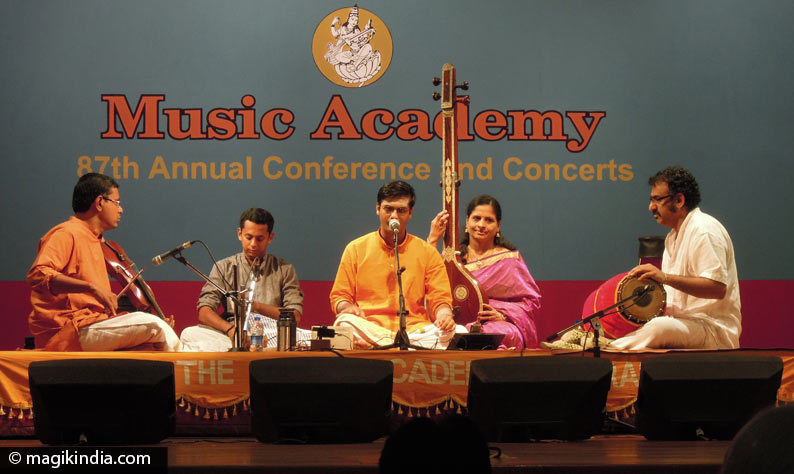
Kollywood cinema
Chennai is the home of the Tamil film industry, popularly known as Kollywood
Kollywood (by reference to Hollywood) is named after the Kodambakkam district of Chennai where the big studios are based.
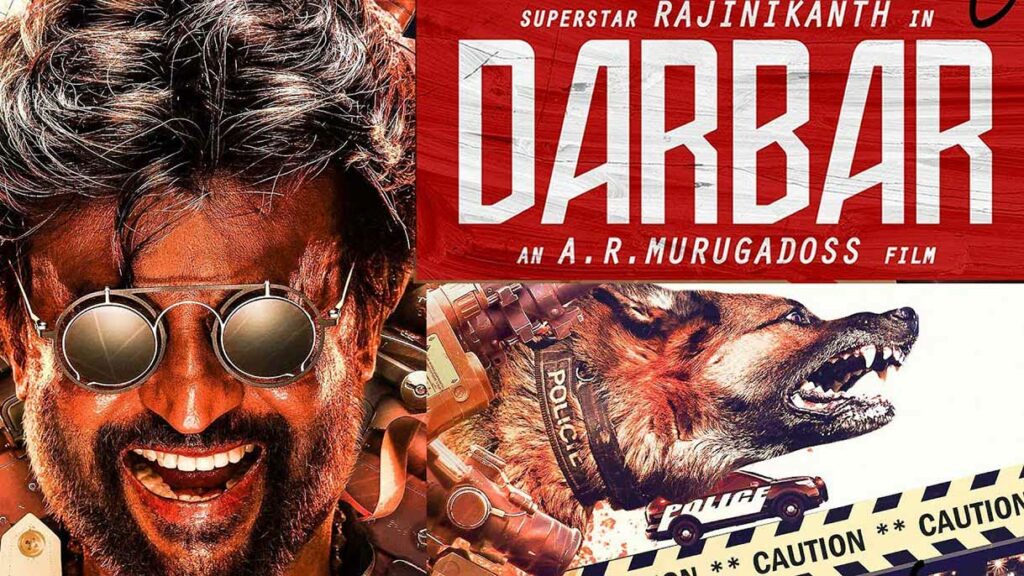
Kollywood is one of the biggest film-making centres in India and is often seen as a rival to Bollywood, the Hindi-language film industry in Mumbai. Tamil-language films were first produced in 1916. They are now screened throughout most of India and exported all over the world.
[ One of the Kollywood hit movies of 2020]
Chennai and St Thomas
Thomas was one of Jesus’ twelve disciples. In St. John’s Gospel he has a particular place in the story as having doubted Christ’s resurrection. As a result he became a symbol of religious unbelief. He is said to have brought the ‘Good News’ to South India, where he is considered the founder of the Church.
He is said to have come to Kodungallur in Kerala, where there was a Jewish community and where Aramaic was spoken, in 52CE.
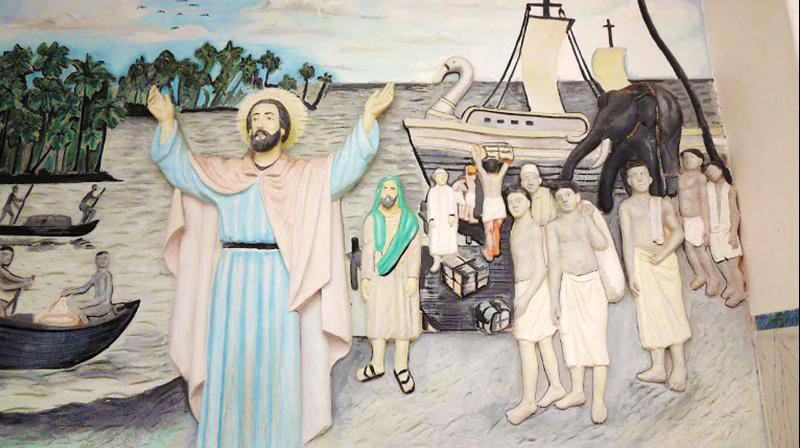
He tried to evangelise the area but was more successful among the native population than among the Jews. He baptised many members of the high castes and royal family, who formed the core of India’s first Christian community.
Between 52 and 63CE he founded seven Churches in Kerala, Tamil Nadu and Sri Lanka.
He is said to have been martyred in about 70CE on the hill now called Mount St. Thomas near Mylapore. His tomb is in the crypt of the Basilica of St. Thomas (see below).
And now, let’s visit Chennai!
Kapaleeshwar Temple
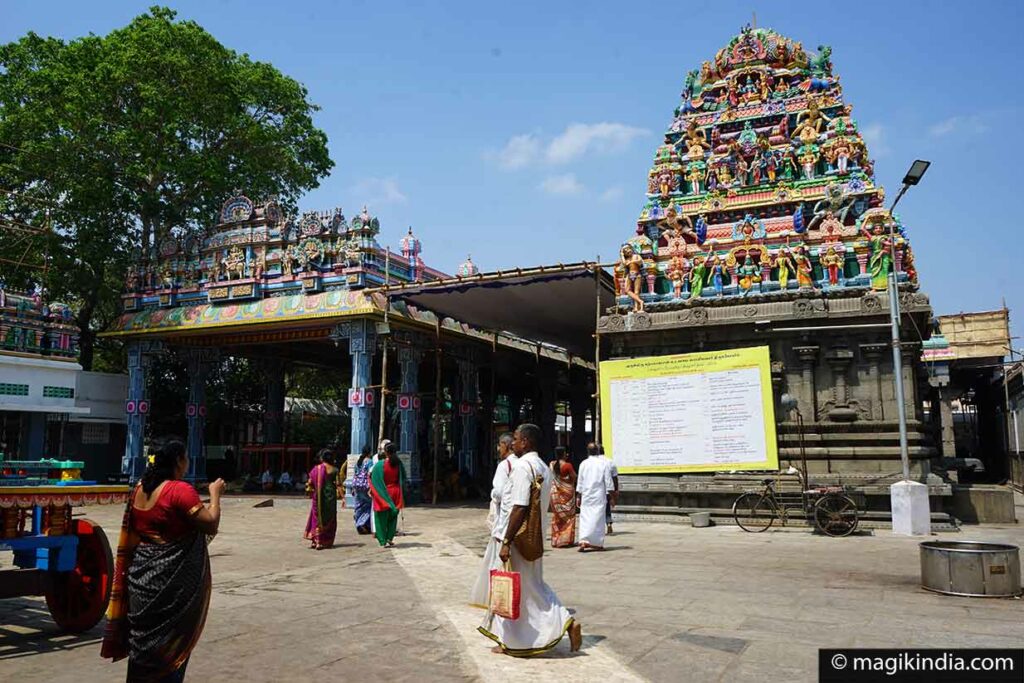
The Hindu temple of Kapaleeshvarar is one of the most deeply venerated shrines in Tamil Nadu. It is located in Mylapore, a southern suburb of Chennai. It is dedicated to Shiva and his consort goddess, here called Karpagambal.
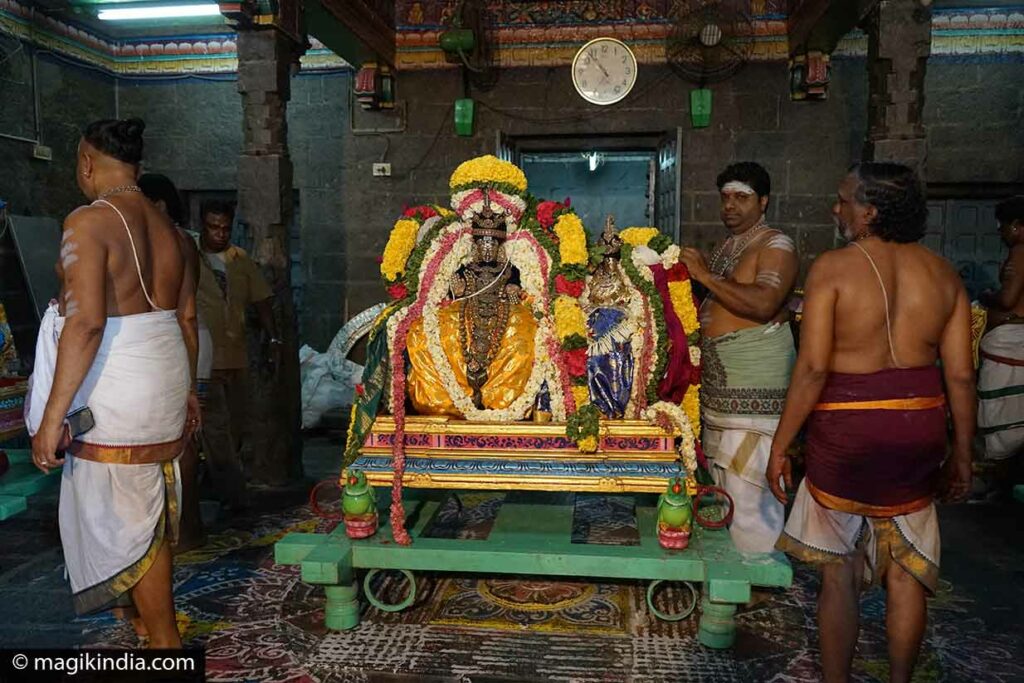
The original temple, built by the Pallava kings in the 7th century CE, stood on the site where the Church of St. Thomas now stands. It was demolished by the Portuguese but rebuilt in its present site by the Vijayanagar kings.
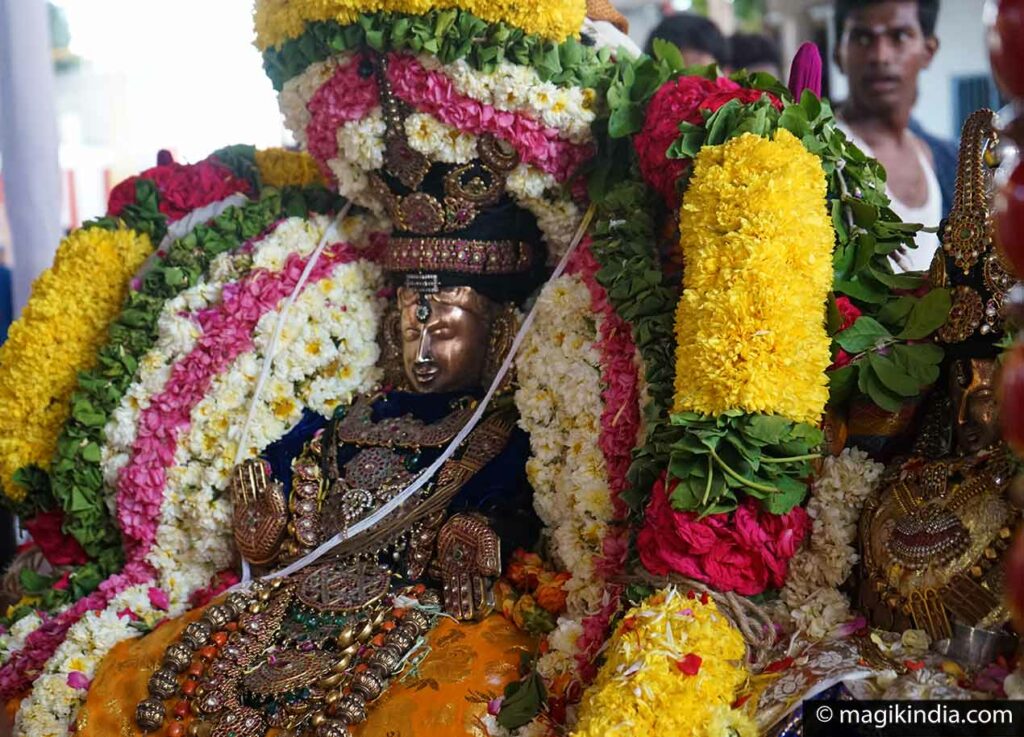
A little anecdote : Under the laurelwood tree in the temple courtyard is a representation of the legend of the goddess Uma, who used to worship Shiva in the form of a peacock (mayil in Tamil, whence the name Mylapore).
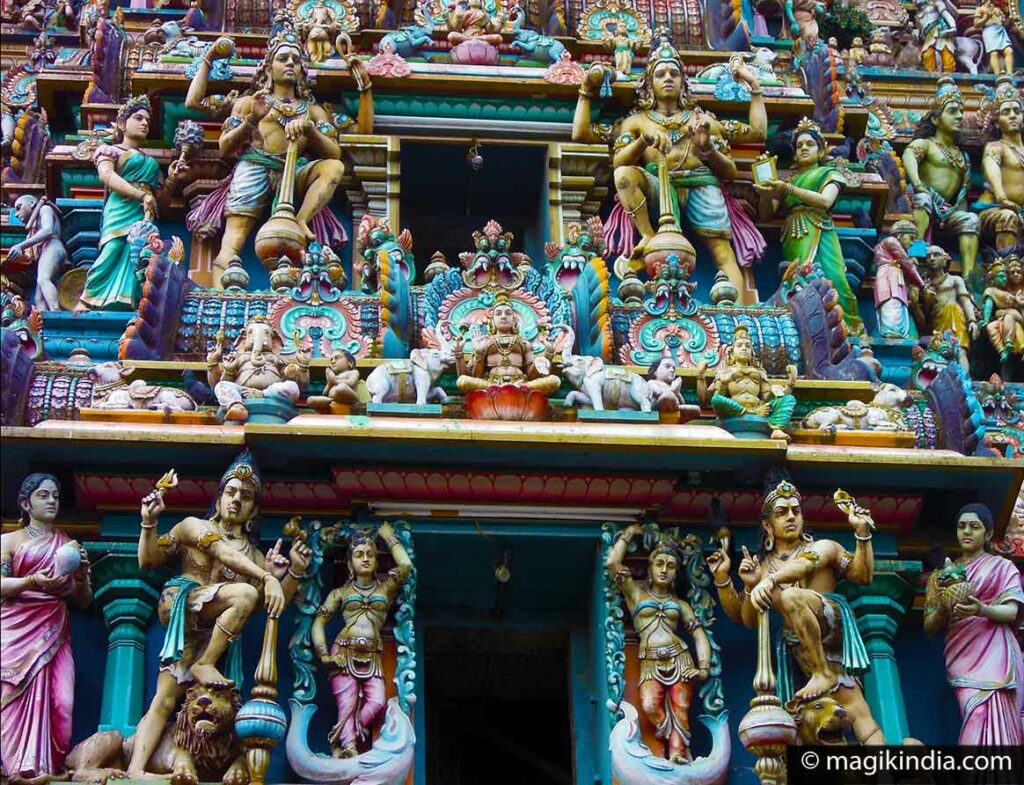
Sri Parthasarathy Temple
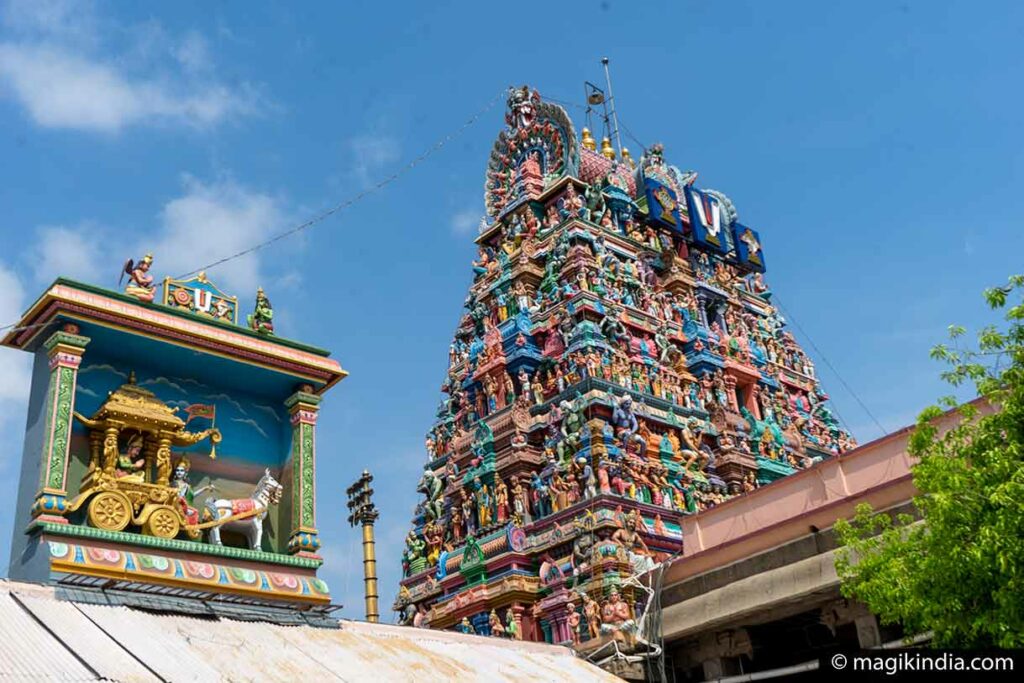
This Hindu temple in Triplicane district is one of the 108 Divya Desams, i.e. one of the temples glorified in the verses of the Nalayira Divya Prabandham, a poetic work written by the Alwars, the Tamil saints of the medieval period.
According to the Hindu scriptures, the Sapta Rishis, the seven founding saints of the Vedic religion that preceded Hinduism, also worshipped here.
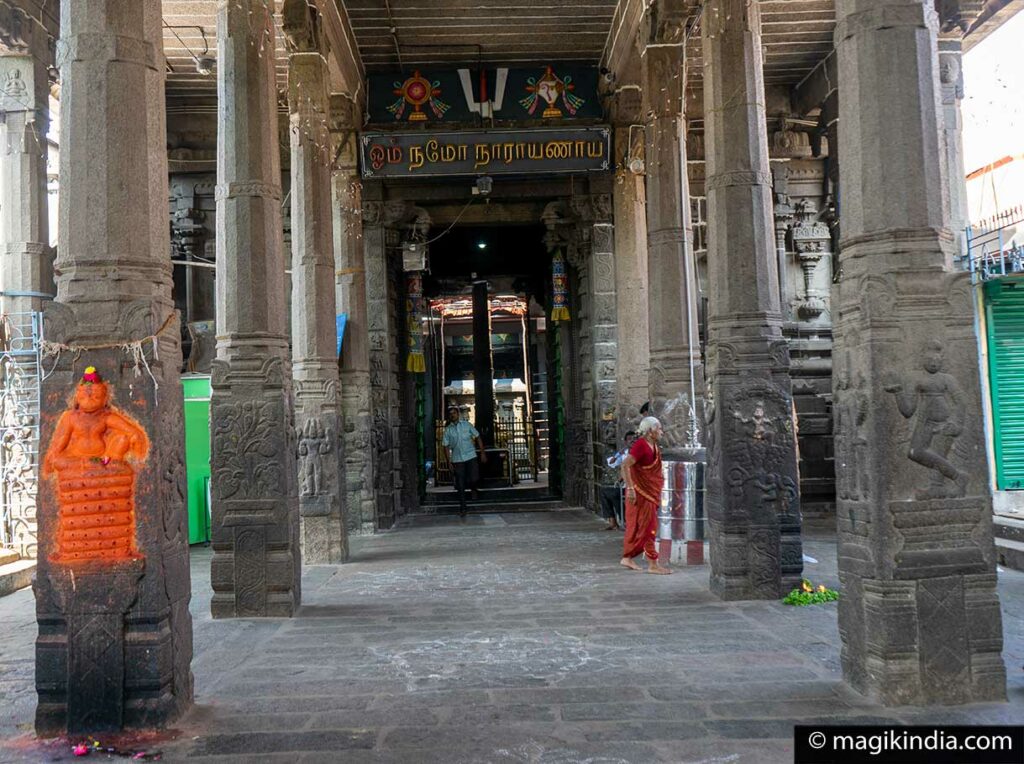
The temple is one of the oldest buildings in Chennai. It was built by the Pallavas in the 8th century CE, and enlarged by both the Cholas and the Vijayanagara kings of the 15th century. Parthasarathy temple houses idols of all five incarnations or avatars of the god Vishnu: Narasimhar, Ramar, Varadaraja, Ranganathar and Krishna.
The presiding deity is Parthasarathy Venkatakrishna, a form of Lord Krishna. The Sanskrit word parthasarathy refers to Krishna’s role as Arjuna’s charioteer in the Mahabharata epic.
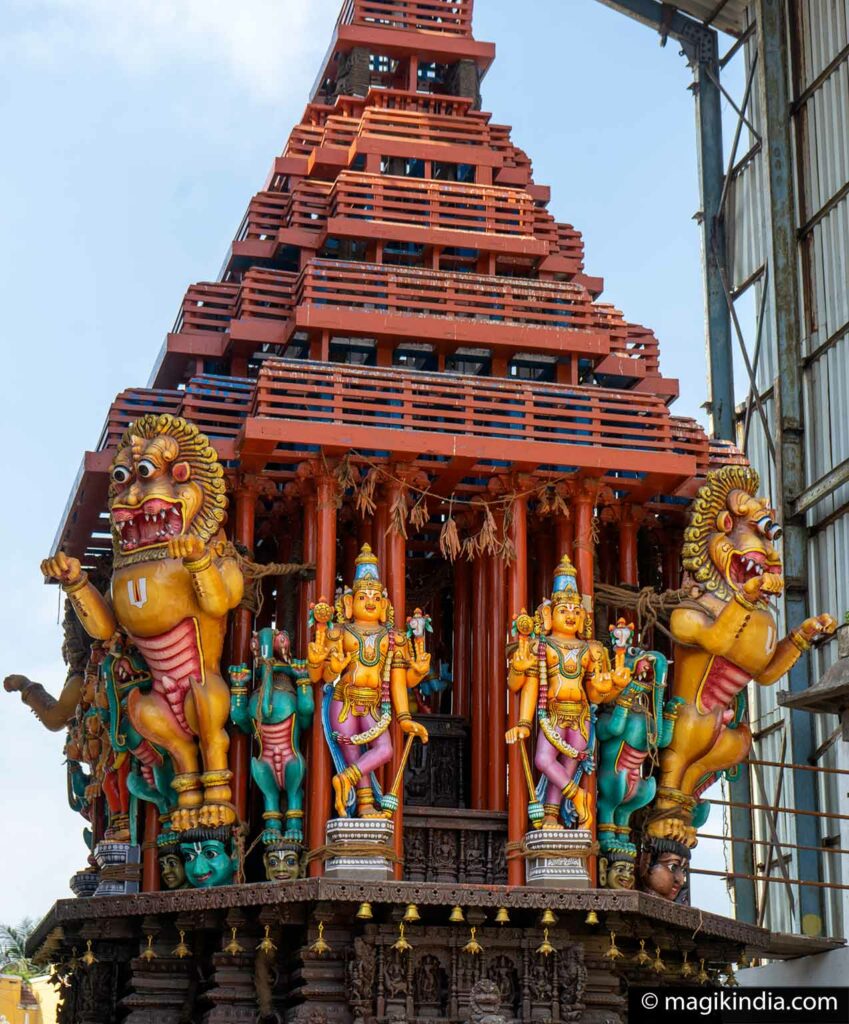
San Thome basilica
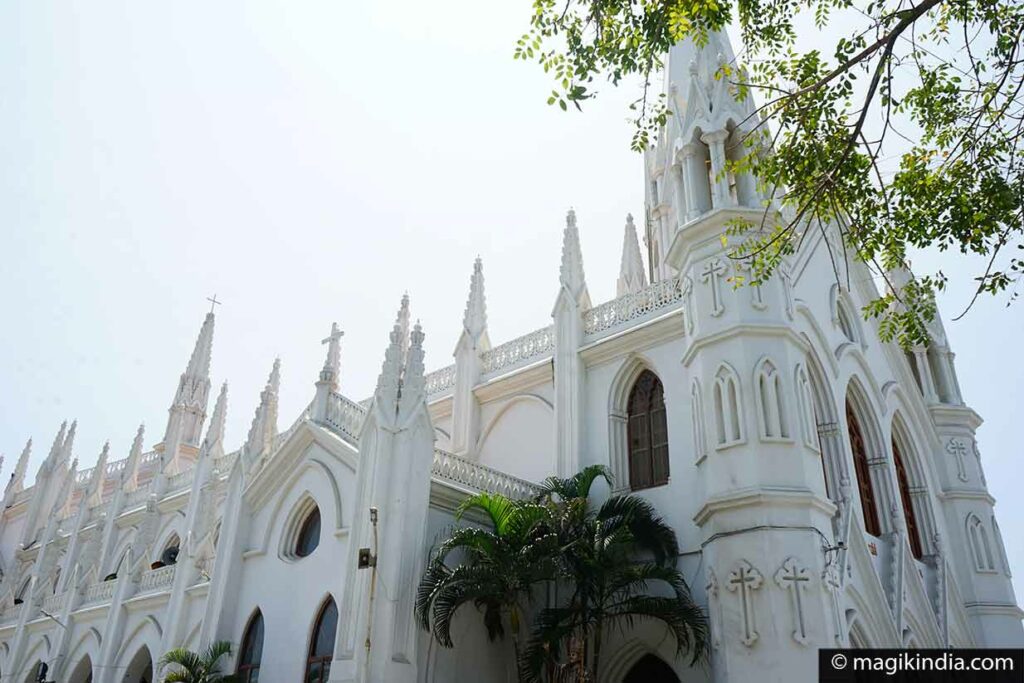
The Basilica of St. Thomas is located in thedistrict. The Portuguese built a church here in the 16th century but it was replaced by the Neo-Gothic structure we see today in 1893. It contains the tomb of the apostle of India. Since 1952 it has been the cathedral of the archdiocese of Madras-Mylapore. The supposed tomb of the apostle St. Thomas lies in a crypt under the main altar.
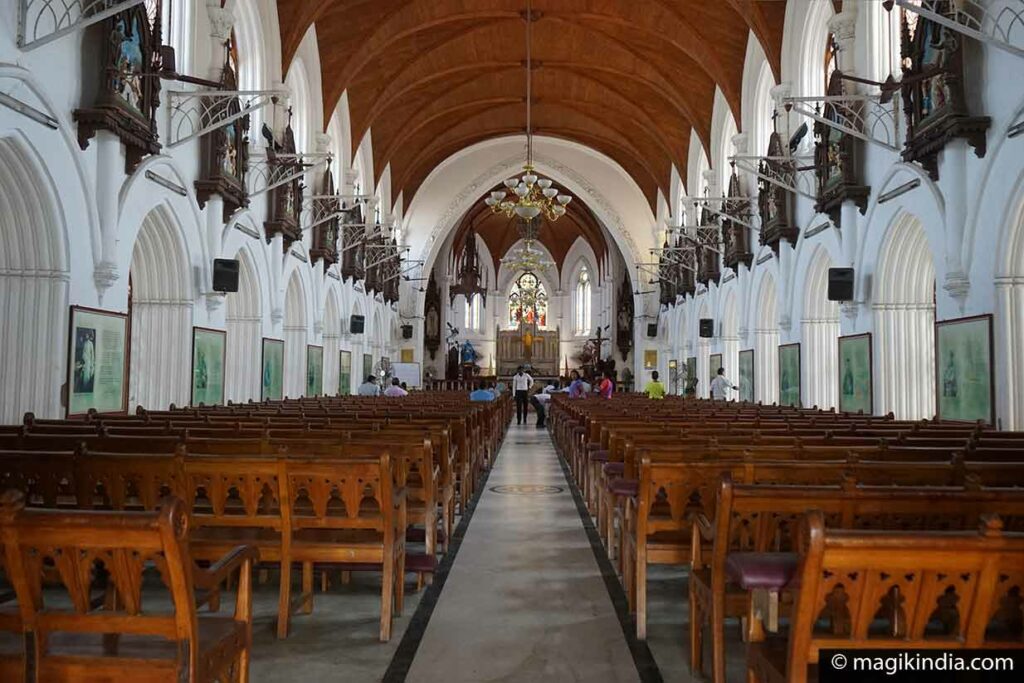
Following a well-established (but not archaeologically proven) tradition, St. Thomas the apostle reached India around 52CE. He visited the Jewish community that already existed in Cochin and established Christian communities in Kerala. Moving on to the Coromandel coast (on the Bay of Bengal) he was received in the kingdom of Mylapore. He died in about 72CE, assassinated “in hatred of the faith” on a hill a few miles from Mylapore (see Mount St. Thomas below).
St. Thomas Mount National Shrine
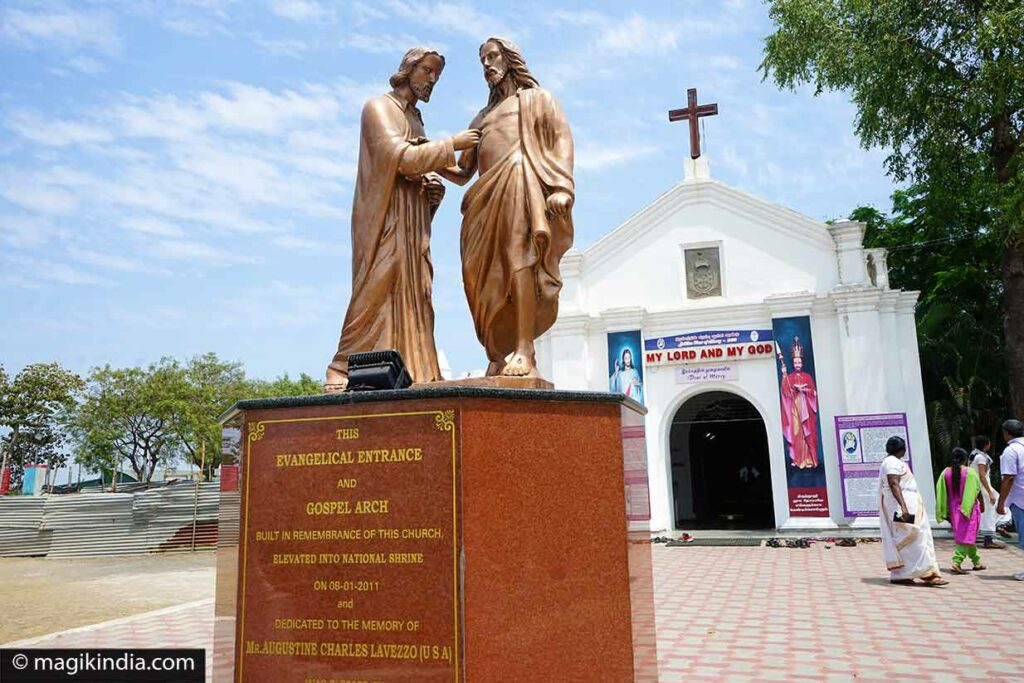
This hill in the southwest suburbs of Chennai is believed to be the place where the apostle St. Thomas was martyred. It is a place of pilgrimage, assiduously frequented by India’s Christians.
A small 16th-century church, built on the very spot where the saint is supposed to have been martyred in 72CE, houses a St. Thomas’ cross.
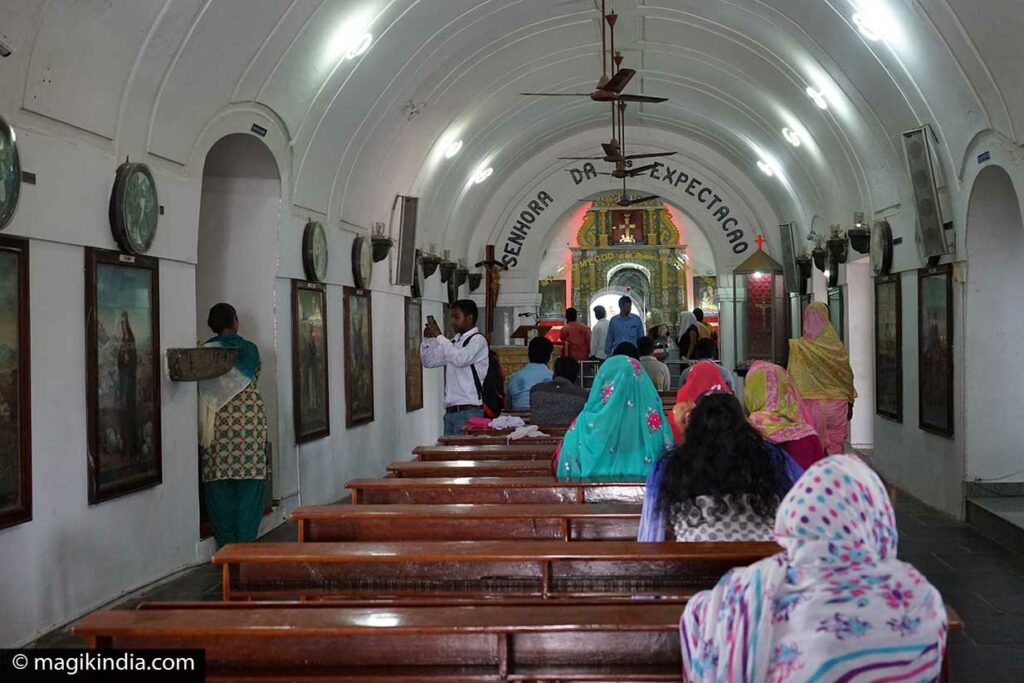
Dating from the 6th or 7th century, this is the oldest known cross of this type. It is carved in black stone and surrounded by an inscription in the Pahlavi script*.
* Pahlavi was a Middle Persian script which developed from the Aramaic script.
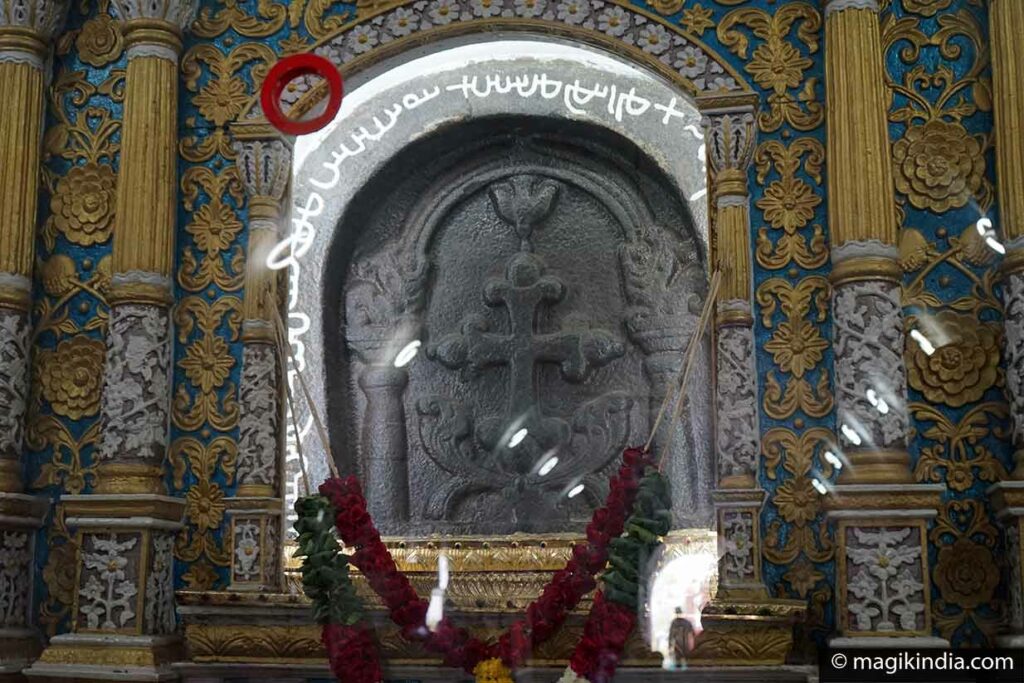
Marina Beach & Elliot’s Beach
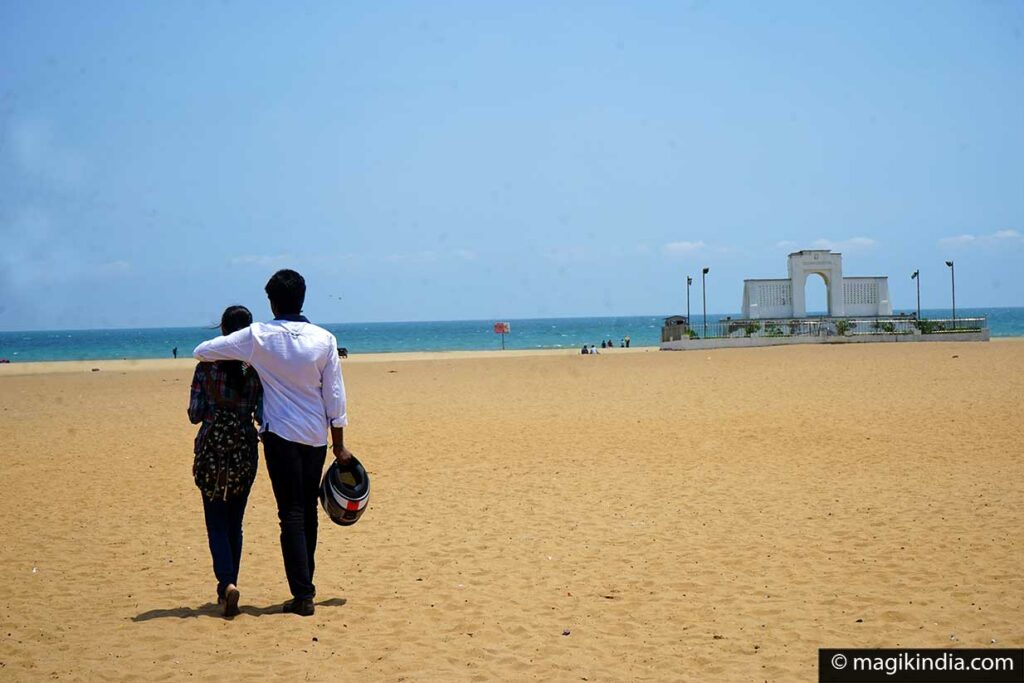
Marina Beach is a natural urban beach. It stretches for 13km, making it the country’s longest urban beach. Bathing is prohibited owing to the dangerous sea currents. The beach attracts about 50,000 visitors a day at weekends and on bank holidays.
Elliott’s Beach, or Bessie, is located south of Marina Beach. It is quieter and more romantic than Marina Beach. The landmark on this beach is the Karl Schmidt Memorial, named after a Dutch sailor who lost his life saving others from drowning.
Sri Ramakrishna Math

The Sri Ramakrishna Math (or Ramakrishna monastery) is the foremost branch centre of the Ramakrishna Order in South India. Hindus consider Ramakrishna one of India’s greatest masters of wisdom.
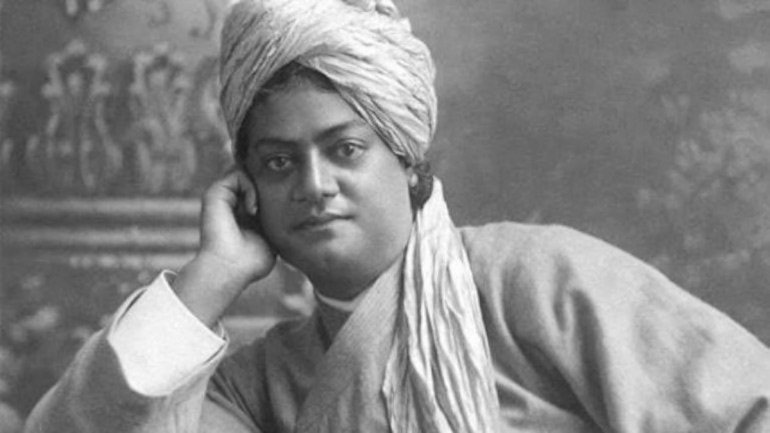
The building of the Math was started in 1897 by Ramakrishnananda, a direct disciple of Sri Ramakrishna. As well as Swami Ramakrishnananda the Math was visited by Sri Sarada Devi, Swami Brahmananda and Swami Sivananda.
The Math is a propitious place for contemplation and meditation. It is a symbol of unity, a place where everyone is welcome regardless of caste, race, creed or nationality.
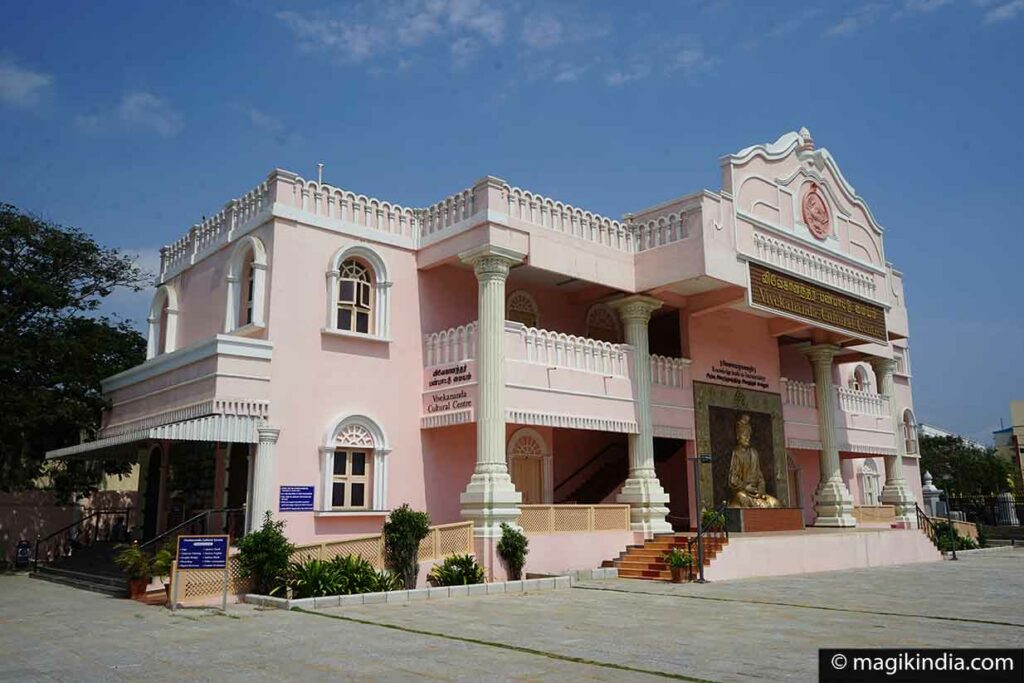
Chennai Central Railway Station
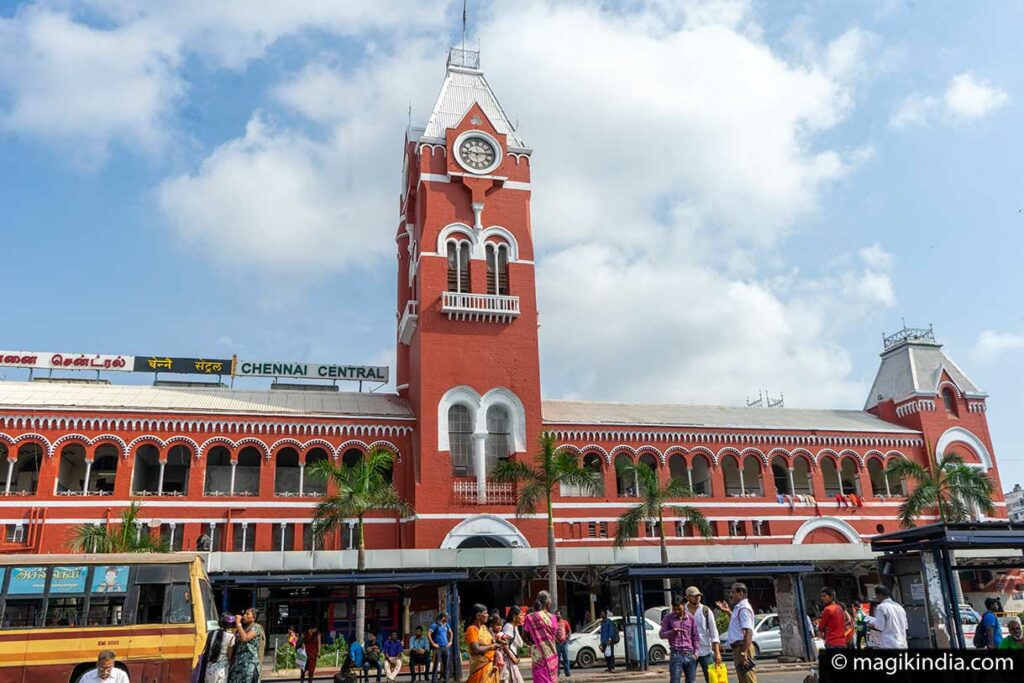
Chennai Central (formerly Madras Central) in Parktown is the main rail terminus for the town of Chennai. The building is interesting for its Indo-Saracenic architecture.
Designed by George Harding in a combination of Gothic and Romanesque styles, it dates from 1873. The Indian government has declared it national heritage.
Fort St. George
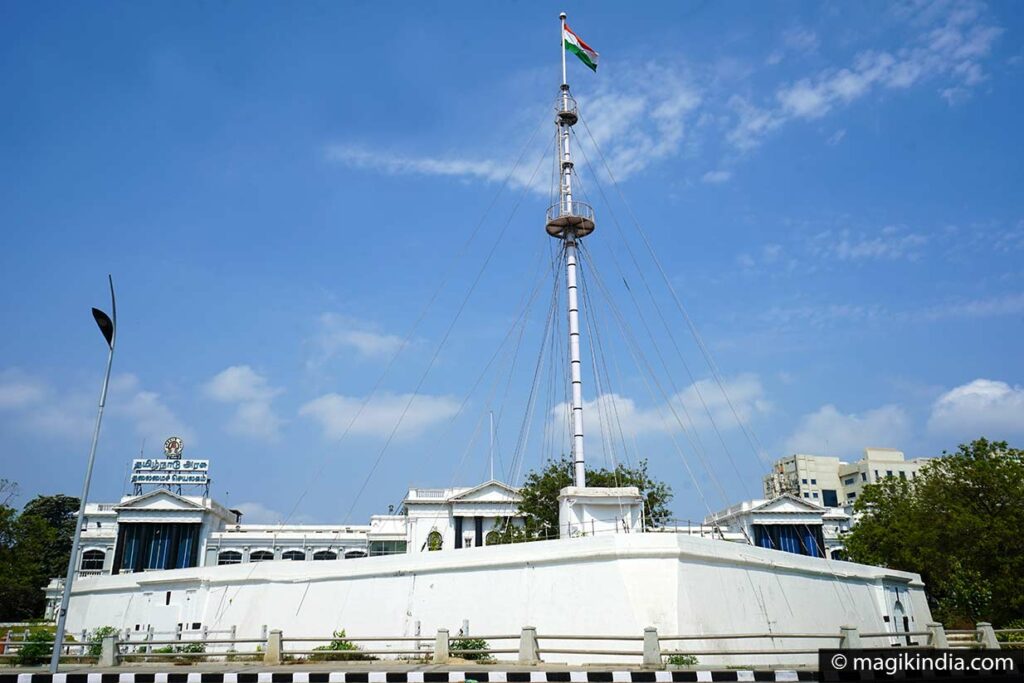
Fort St. George (historically White Town) was the firt fortress built by the British in India, in 1693. It is a complex of buildings that includes the Church of St. Mary, a museum, Wellesley House and the administrative departments of the state of Tamil Nadu.
The construction of the fort by the harbour provided the impetus for further settlement and trading activity; it supplanted the Portuguese trading post of São Tomé de Meliapore a little further south. The town grew up gradually around the fort.
Armenian Church
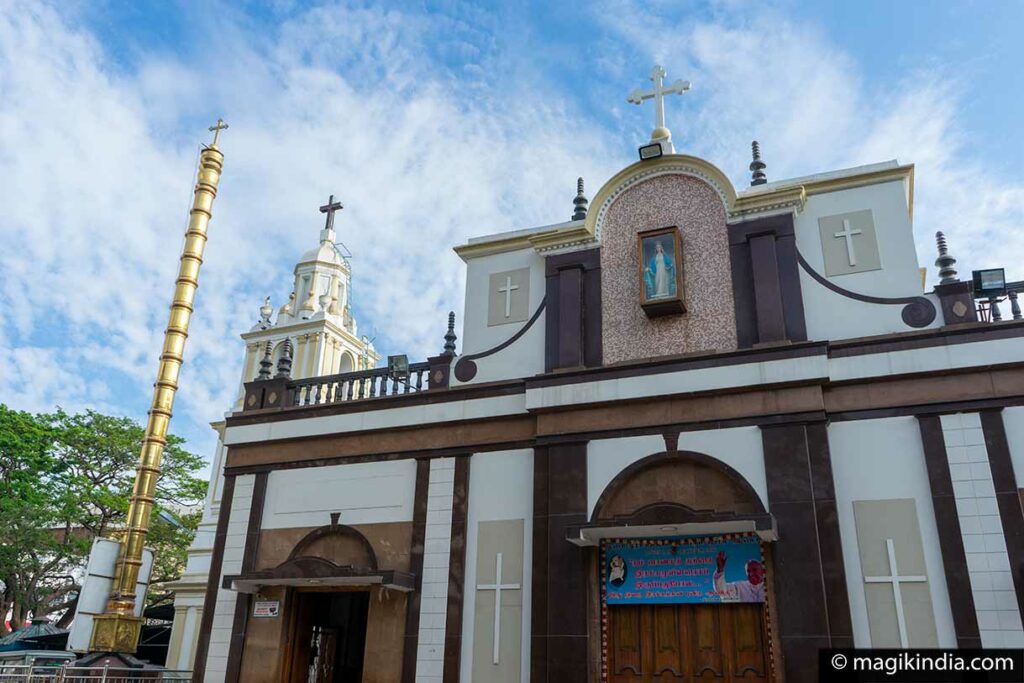
The Armenian Church of the Virgin Mry, in the old St. George’s Town district of Chennai, belongs to the Armenian Apostolic Church. Built in 1712, it is one of the oldest Christian churches in India. It is a listed historic monument.
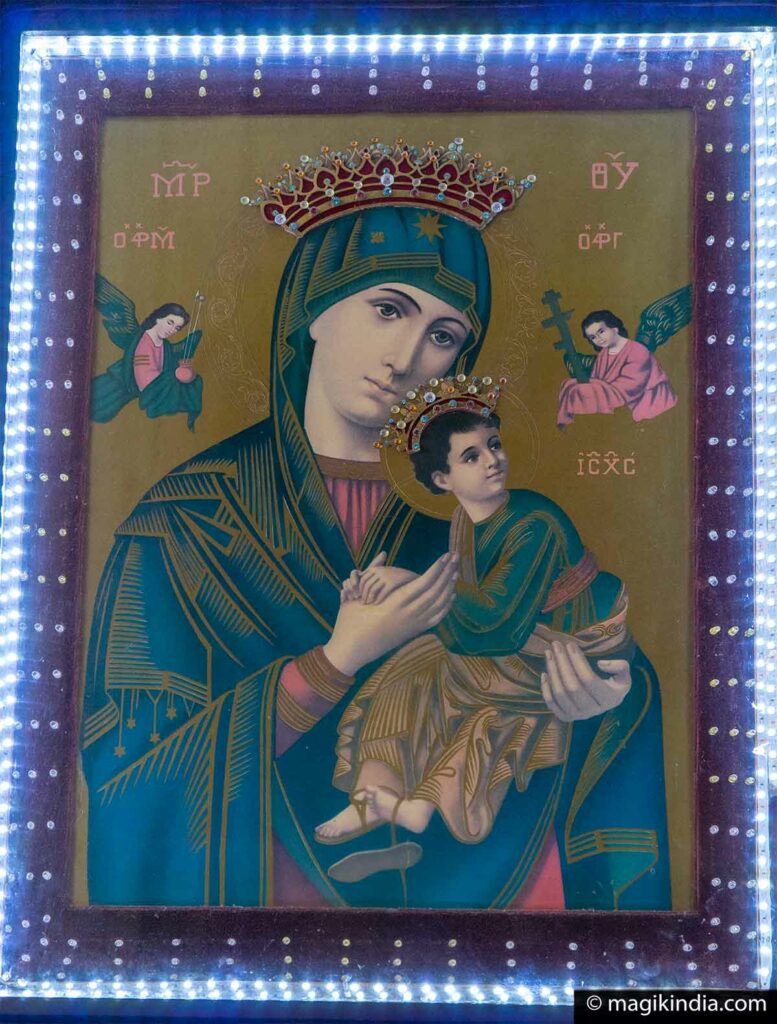
The Armenians are a people from western Central Asia who converted to Christianity in the early 4th century. They were mainly merchants; the communities they formed in many cities of Asia (especially port cities) quickly became prosperous. They carried goods along the great caravan trails across Asia, and that is how they came to be in India, for example at the court of the Mughal emperors, long before the Portuguese and British arrived.
In Chennai they traded in silk, spices and precious gems. The part of Chennai old town where the Armenian community lived is still called Armenian Street.
Almost the entire Armenian community emigrated at the start of the 21st century
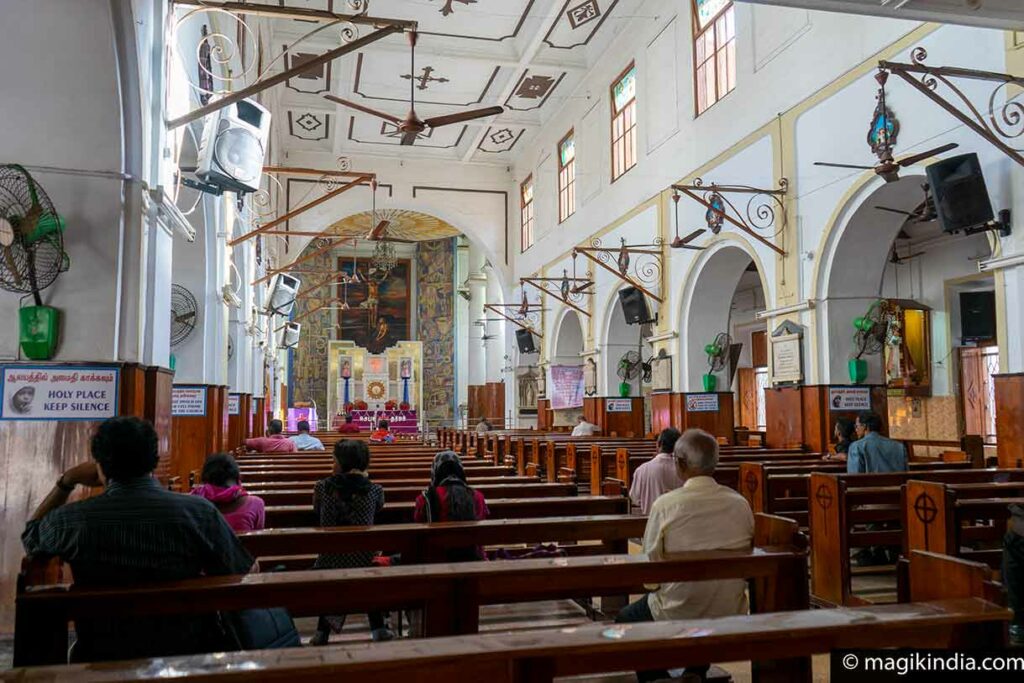
Egmore Museum ou Madras Government Museum
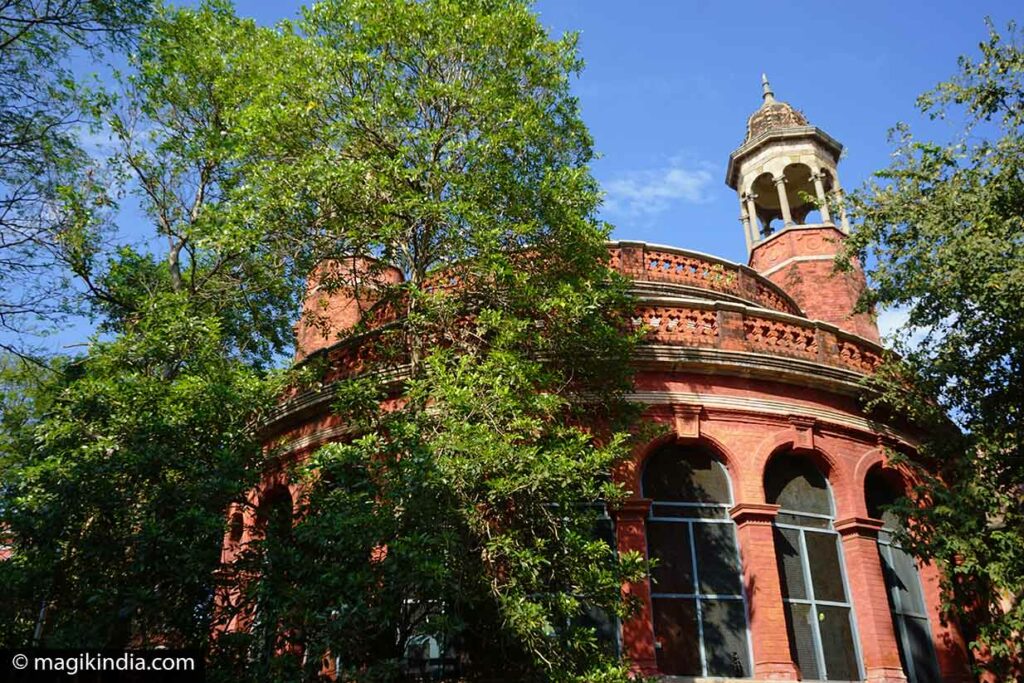
The Chennai government museum is in the Egmore district. Built in 1851 in Indo-Saracenic style, it is the second-oldest museum in India after the one in Kolkata (Calcutta).
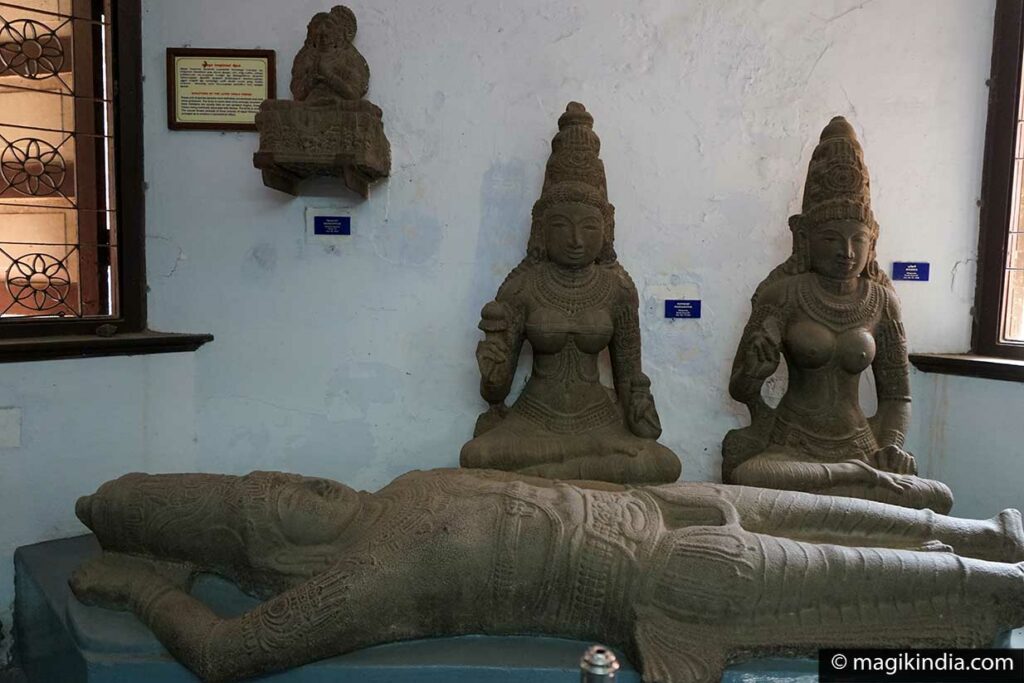
It boasts especially rich archaeological and numismatic collections. It has the largest collection of Roman relics outside Europe.
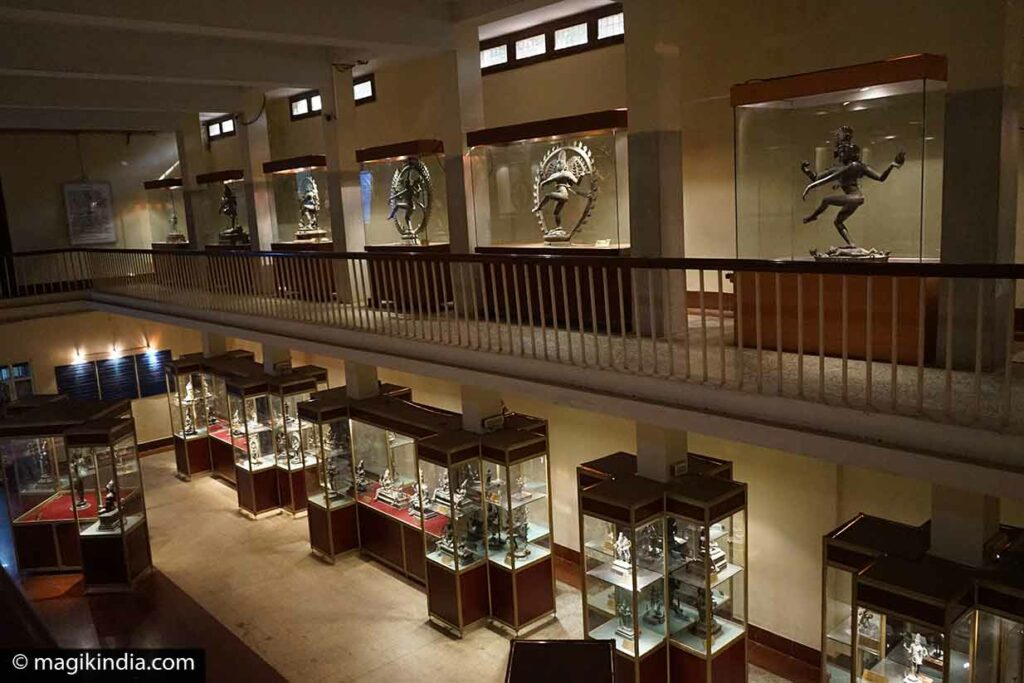
Thousand Lights Mosque

The Thousand-Lights Mosque on Anna Salai Road, covering a full hectare, is one of the largest mosques in India. It was built by Nawab Umdat-ul-Umra in 1810 and is a place of pilgrimage for Shia Muslims.
It is said that in the old days 1000 lamps were needed to light the prayer hall – whence the name.
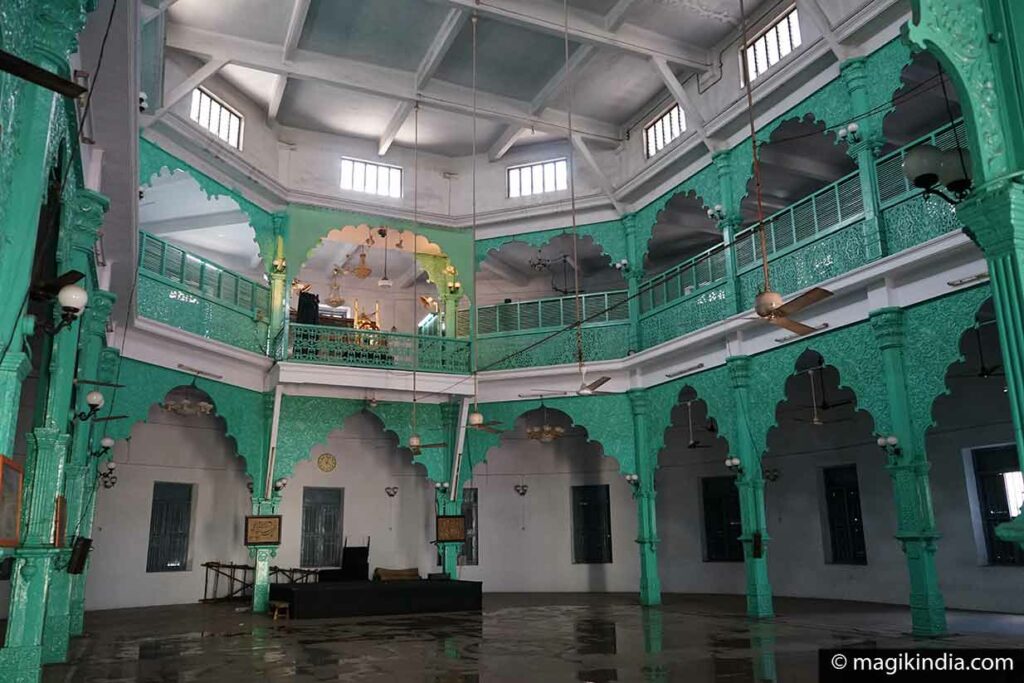
Valluvar Kottam
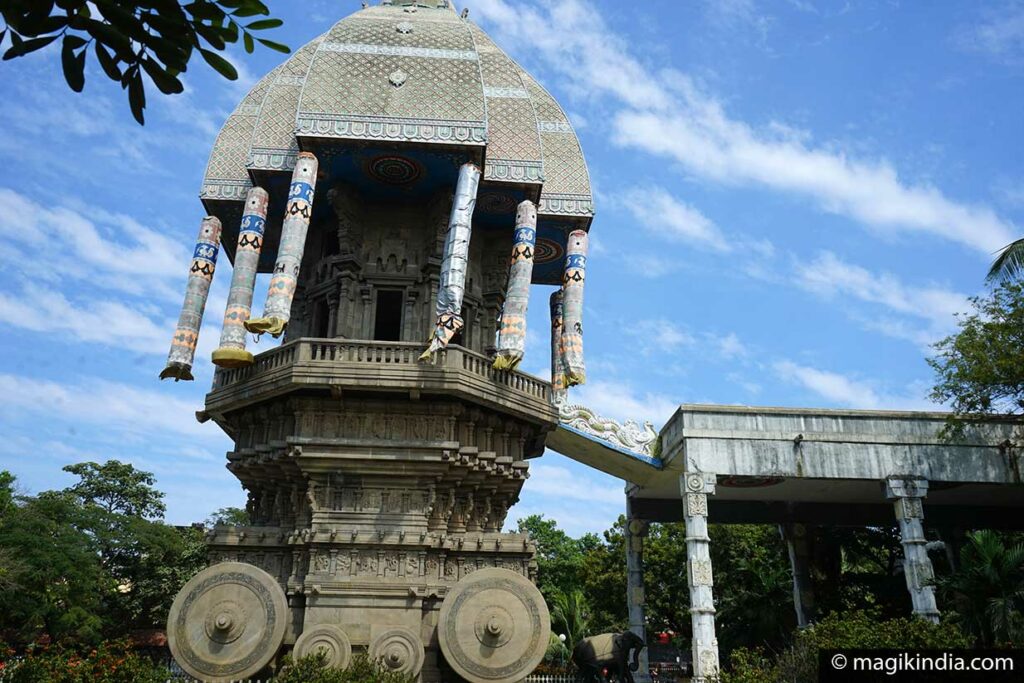
The Valluvar Kottam was built in 1976 in memory of the Tamil poet and saint Thiruvalluvar who wrote the famous philosophical work Thirukkural about 2000 years ago.
The memorial is a 39m replica of the chariot of the Thiruvarur temple in southern Tamil Nadu. Inside is a life size statue of Thiruvalluvar.
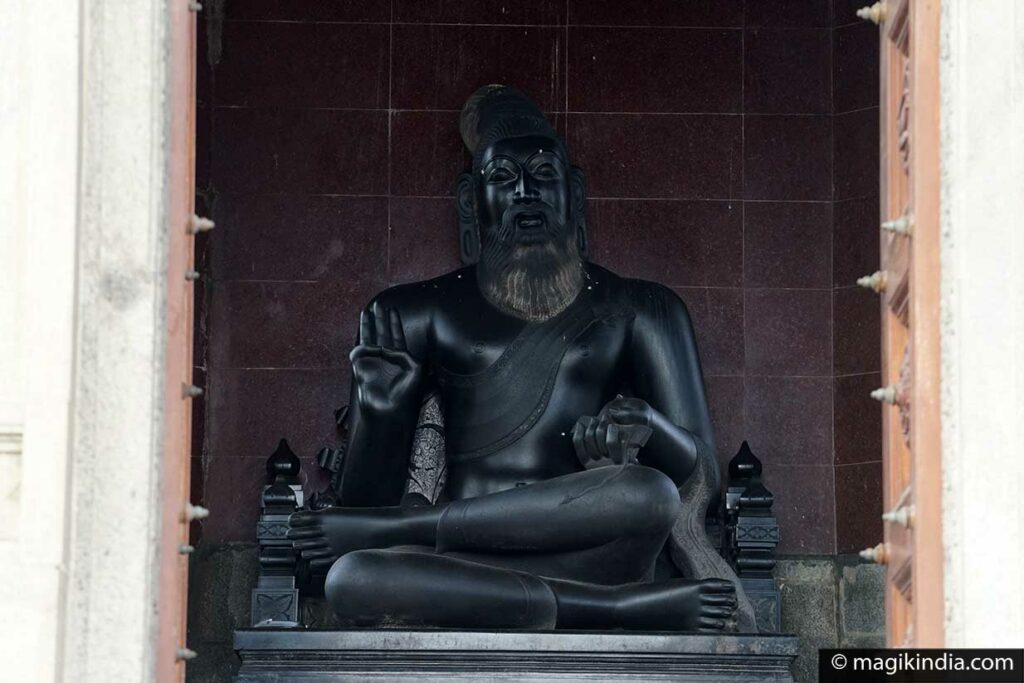
The chariot stands behind an auditorium that can accommodate some 4000 people. The 133 chapters and 1330 verses of the Thirukkural are inscribed in bas-relief on the walls.

Madras High Court
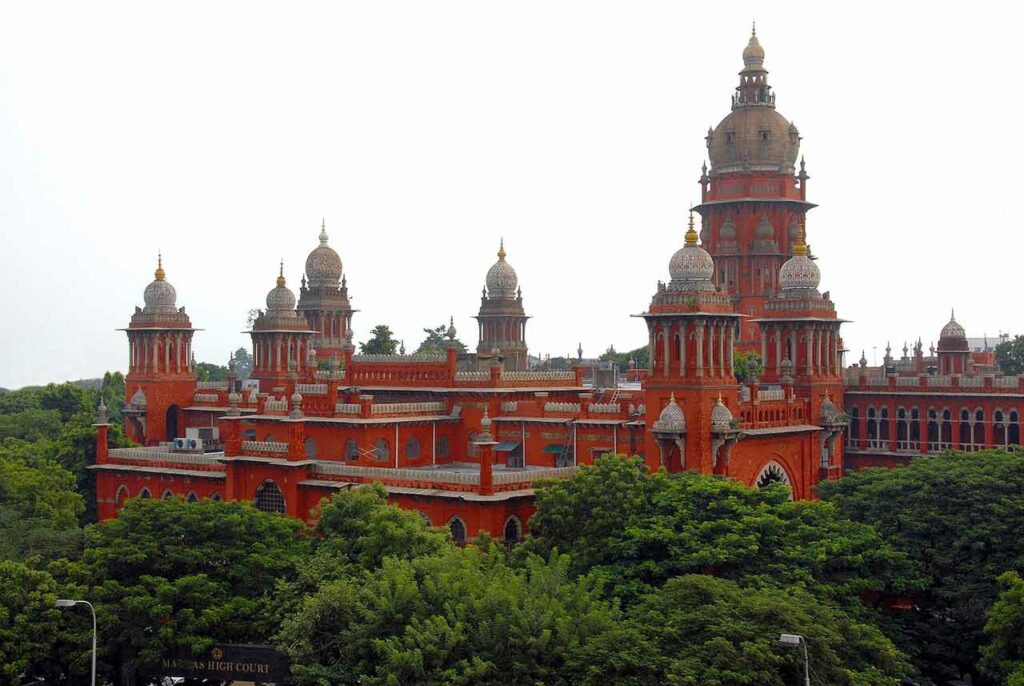
The building of the High Court of Chennai is an example of Indo-Saracenic architecture. The painted ceilings and stained glass doors are masterpieces in their own right. It was built in 1892 on an initial design by J.W. Brassington with later supervision by architect Henry Irwin.





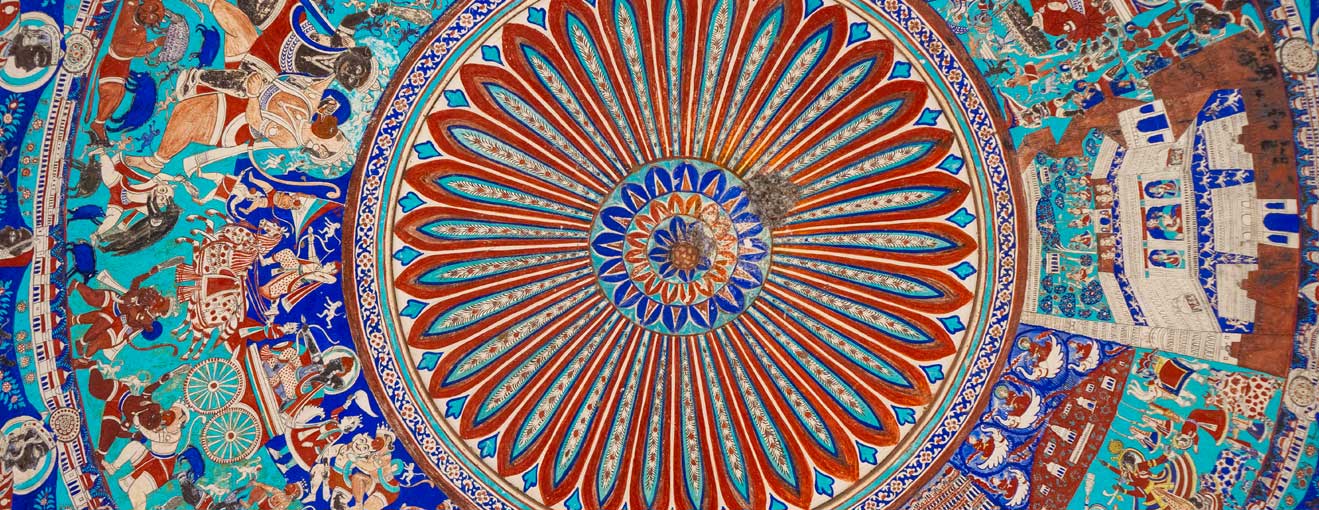

An excellent short description of Chennai for a newcomer.Self and wife are visiting Chennai from 6-7th Feb but are keen to see the Jew related things/places/people.I am given to understand a synagogue is coming up at Erode.Can somebody give me addresses and contact details of Jews in and around Chennai?
Paul Puri
N Delhi
099 586 65759
Dear Mr Puri, Thanks for your kind comment. I don’t have any contact of members of the jewish community in Chennai. Regards. Mathini